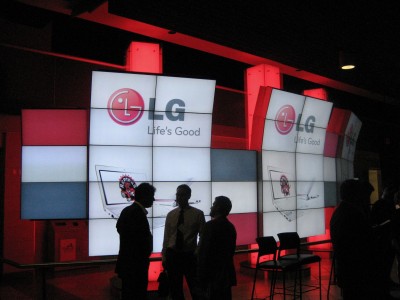By Lyle Bunn
Digital signage has now achieved a certain critical mass, in terms of installed networks, refined technologies, supply chains and business processes, but its growth continues at a rapid rate. Recent market analysis reports from Frost & Sullivan, DisplaySearch, iSuppli, Allied Business Intelligence (ABI) Research, PQ Media and Northern Sky Research (NSR) have all roughly forecast a 20 per cent compound annual growth rate (CAGR) for display shipments, advertising and overall industry revenues.
“Every part of the industry needed to have enough sail up to catch its share of coming winds,” says Stuart Armstrong, president of digital signage platform developer ComQi and past-president of the Digital Screenmedia Association (DSA).
In North America alone, digital signage has grown into a $7-billion industry. With some 1.4 million displays installed across more than 600 networks—split roughly 50/50 into ad-based and corporate networks—the continent is ahead of Europe and Asia in the adoption of digital signage. A study by Arbitron in 2010 showed 70 per cent of U.S. residents—about 181 million people—had viewed digital displays in a given month.
With improvements in design, deployment and operations, the medium of digital signage has become highly influential and has won approval from an audience that now expects to see more sophisticated content. Some TV ads are even being pilot-tested on out-of-home (OOH) screens first.

Restaurants continue to represent one of the high-growth market segments for digital signage. Photos courtesy NEC Display Solutions
Digital signage is also taking on new forms that allow it to become more ubiquitous. While liquid crystal displays (LCDs) are being assembled into massive video walls, the industry is also seeing a rise in smaller-format displays, like digital photo frames installed on store shelves.
Focus of investment
Most of the inherent characteristics of digital signage have not changed. High-growth market segments for the medium continue to include retail stores, transit vehicles and stations, cinemas, stadiums, houses of worship, corporate offices, bars, restaurants, hospitals, campuses, hotels and casinos.
Notably, the cost of digital signage technology itself is dropping while the cost of operations is rising. Already, half of the North American market value comes from content development, rather than hardware or software. This is due to an increased focus on the relevance and context of content.
“We used to see lots of screens thrown up with no sense of ownership,” says Kim Sarubbi, president and CEO of Saddle Ranch Digital, a content developer. “Now we’re seeing companies taking a more holistic approach.”
“Digital signage is not about technology, it is about go-to-market know-how,” says






